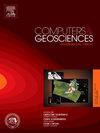利用有限数据提高生成式对抗网络的训练性能:应用于地质模型的生成
IF 4.2
2区 地球科学
Q1 COMPUTER SCIENCE, INTERDISCIPLINARY APPLICATIONS
引用次数: 0
摘要
过去几年中,人们对应用生成对抗网络(GANs)生成地质模型的兴趣与日俱增。尽管 GANs 已被证明是学习和重现某些地质模型中复杂数据模式的有效工具,但仍存在一些挑战。其中,一个广受关注的问题是需要大量样本来确保高质量的训练,而这在某些情况下可能会过于昂贵。为了尝试为上述挑战提供一种(可能是部分)解决方案,我们在本研究中探讨了零中心判别器正则化技术在提高 GAN 性能方面的可行性和有效性。此外,我们还评估了一种自适应数据增强技术,以克服训练数据有限的潜在问题,从而生成地质上可行的油气藏模型。我们的研究结果表明,这两种技术的结合可以显著提高 GAN 的性能。特别是,我们观察到,在一个 GAN 中使用自适应数据增强技术,可以获得与使用更大数据集的 GAN 类似的结果。本文章由计算机程序翻译,如有差异,请以英文原文为准。
Improving the training performance of generative adversarial networks with limited data: Application to the generation of geological models
In the past years, there is a growing interest in the applications of Generative Adversarial Networks (GANs) to generate geological models. Although GANs have proven to be an effective tool to learn and reproduce the complex data patterns present in some geological models, some challenges still remain open. Among others, a well-noticed problem is the need for a large number of samples to ensure high-quality training, which can be prohibitively expensive in some cases. As an attempt to offer a (possibly partial) solution to the aforementioned challenge, in this study, we investigate the feasibility and effectiveness of a zero-centered discriminator regularization technique for improving the performance of a GAN. Additionally, we evaluate an adaptive data augmentation technique to overcome the potential issue of limited training data, for the purpose of generating geologically feasible realizations of hydrocarbon reservoir models. Our findings demonstrate that a combination of the two techniques lead to notable performance improvements of a GAN. Particularly, it is observed that using the adaptive data augmentation technique in a GAN can yield similar results to those obtained by the GAN with a much larger dataset.
求助全文
通过发布文献求助,成功后即可免费获取论文全文。
去求助
来源期刊

Computers & Geosciences
地学-地球科学综合
CiteScore
9.30
自引率
6.80%
发文量
164
审稿时长
3.4 months
期刊介绍:
Computers & Geosciences publishes high impact, original research at the interface between Computer Sciences and Geosciences. Publications should apply modern computer science paradigms, whether computational or informatics-based, to address problems in the geosciences.
 求助内容:
求助内容: 应助结果提醒方式:
应助结果提醒方式:


